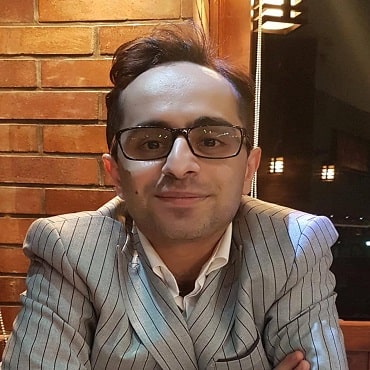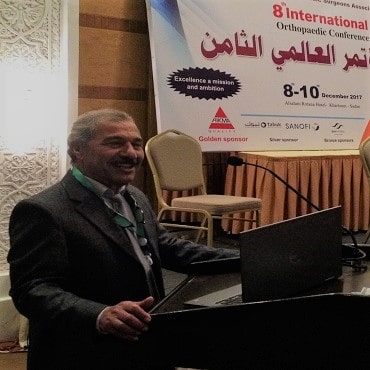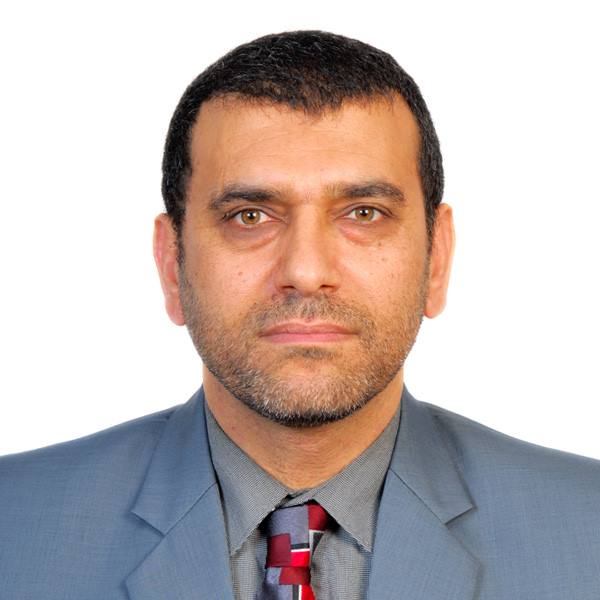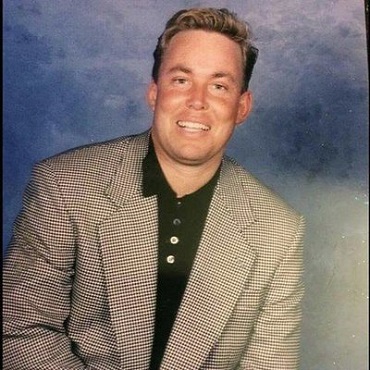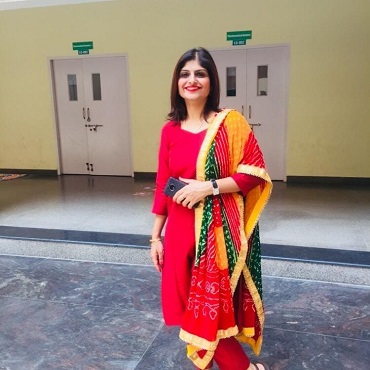
orthopedics 2019

Theme: Rejuvenating the Orthopedic Technology

Orthopedics 2019 aims to reveal advances in Orthocare management and Education in relation to health disparities as well as a wideness of other topics. Orthotists and Prosthetists are qualified Allied Health Professionals who assess and treat the physical and functional inabilities of people resulting from sickness and disabilities. Orthotists and Prosthetists are trained to prescribe, design, fit and monitor orthoses and prostheses. We heartily welcome you to attend the 2nd International Conference on Orthopedics and advanced Care scheduled on February 25-26, 2019, in Singapore This Conference is mainly accelerating on “Rejuvenating the Orthopedic Technology”. This conference procures a Global Platform for Orthotists, Prosthetists, Orthocare experts, Doctors, Surgeons, Physicians, Therapists, Researchers, Young researchers and Business delegates to Exchange Ideas and Knowledge. Meetings International is a world leader in organizing a high quality Symposiums, Meetings, Conferences, Workshops and Exhibitions. It covers all major fields of Medicine, Engineering and Science and Nature. Meetings Int. has been associated with major Corporations, National and international associations and high level individuals, dedicated to host world class events.
Orthopedics Meeting 2018 Highlights are listed below:
- Orthopedics & Orthopedic Surgery
- Orthotics and Prosthetics
- Osteoarticular Infections
- Orthodontics
- Osteoarthritis and Rheumatoid Arthritis
- Musculoskeletal Injury and Repair
- Arthroplasty & Arthroscopy
- Stem cells for Orthopedic Conditions
- Exercise and Sports medicine
- Born Deformity & Reconstructive Surgery
- Pediatric Orthopedics
- 3D Printing Orthopedics & Robotics
Target Audience:
- Medical Colleges
- Training institutes
- Doctors
- Scientists / Researchers
- Entrepreneurs
- Professors
- Students
- Implant designers
- Ortho patients
Why Singapore?
This conference will be a inestimable and important platform for motivating international and integrative exchange at the forefront of Orthopedics. Over the course of 2 days, internationally-renowned speakers will exemplify how their research exploration has developed in response to present day challenges. The attending professionals and industry associates will also provide exotic networking experience. The array of talks, poster presentations, workshops, discussions and networking events will keep participants intended in learning and making innovative connections at Orthopedics 2019.The Conference will assemble together Therapists, academicians, scientists, engineers, and technologists from all over the world, and we believe that you will take this opportunity to accompany us for academic exchange and visit the city of Singapore.
Session 1: Orthopedics & Orthopedic Surgery
Orthopedic surgery or Orthopedics, also spelled orthopaedics, is the branch of Surgery focussed with conditions involving the musculoskeletal system. Orthopedic surgeons use both surgical and nonsurgical means to treat musculoskeletal trauma, spine diseases, sports injuries, degenerative diseases, infections, tumors, and congenital disorders. Numerous orthopaedic surgeons elect to do further training, or fellowships, after accomplishing their residency Practise.
One of the most significant orthopedic health problems in present day life is low back pain, which can be caused by Continuous and Stressful activities, improper use and exposure to continual vibrations. Traumas or injuries to the back can cause chronic low back pain and worsening of the vertebrae is a definite cause of low back pain. If you are obese or have poor muscles tone you will experience low back pain and sprain that continually hurts. Studies have shown that smokers have increase occurrences of this type of orthopedic pain.
- Fractures are definite orthopedic problems. Open fractures or compound fractures include there bone protruding through the skin or a wound that exposes the bone through the skin. A closed fracture or simple fractures is a broken bone seen, but not exiting the skin through a wound. Greenstick fractures are incomplete fractures. A small portion of the bone is broken; other fractures are straight line fractures across the bone and spiral fractures are actual breaks that spiral around the bone.
- Low back pain in an orthopedic condition that affects one out of ten people. Low back pain presents from mild and annoying to persistent and severe. If you have pain in your lower back your mobility is restricted and normal functioning.
Orthopedics Conference | Orthopedics Congress | Orthopedics Meeting | Singapore Orthopedics Conference | Asian Orthopedics Conference | Rheumatology Conference | Arthroplasty Conference | Orthocare Meeting | 3D Printing Orthopedics Workshop | Orthocare symposium |
Session 2: Orthotics and Prosthetics
Orthotics is a specialty within the medical field concerned with the design, manufacture and application of orthoses. An orthoses is "an externally applied device used to modify the structural and functional characteristics of the neuromuscular and skeletal system". An Orthotist is the primary medical clinician responsible for the prescription, manufacture and management of orthoses. An orthoses may be used to:
· Control, guide, limit and/or immobilize an extremity, joint or body segment for a particular reason
· Restrict movement in a given direction
·Assist movement generally
- Reduce weight bearing forces for a particular purpose
- Aid rehabilitation from fractures after the removal of a cast
- Otherwise correct the shape and/or function of the body, to provide easier movement capability or reduce pain
Prosthetic should be made lightweight to have a better convenience for the amputee. Some of these materials include:
- Plastics: Polyethylene ,Polypropylene ,Acrylics ,Polyurethane
- Wood (early prosthetics)
- Rubber (early prosthetics)
- Lightweight Metals: Titanium, Aluminium, Carbon Fibre.
Orthopedics Conference | Orthopedics Congress | Orthopedics Meeting | Singapore Orthopedics Conference | Asian Orthopedics Conference | Rheumatology Conference | Arthroplasty Conference | Orthocare Meeting | 3D Printing Orthopedics Workshop | Orthocare symposium |
Session 3: Osteoarticular Infections
Osteoarticular mycoses due to non-Aspergillus moulds are uncommon and challenging infections. For a child with a suspected bone or joint infection, knowledge of the workup and initial therapy is important to provide quality care. Fever and pain are hallmarks of a pediatric osteoarticular infection, although occasionally the signs and symptoms can be more subtle. The use of C-reactive protein to diagnose and validate effective management of treatment has become standard.
Non-Aspergillus osteoarticular mycoses occur most frequently in children after injury and in adults after surgery. Accurate early diagnosis and long-course therapy with a combined medical-surgical approach may result in favourable outcome.
Orthopedics Conference | Orthopedics Congress | Orthopedics Meeting | Singapore Orthopedics Conference | Asian Orthopedics Conference | Rheumatology Conference | Arthroplasty Conference | Orthocare Meeting | 3D Printing Orthopedics Workshop | Orthocare symposium |
Session 4: Orthodontics
Orthodontia, also called Orthodontics and Dentofacial orthopedics, is a specialty field of dentistry that deals primarily with malpositioned teeth and the jaws: their diagnosis, prevention and correction. An Orthodontist is a specialist who has undergone special training in a dental school or college after they have graduated in dentistry. Orthodontic treatment can focus on dental displacement only, or deal with the control and modification of facial growth. In severe malocclusions that can be a part of craniofacial deformity, management often requires a combination of orthodontics with headgear or reverse pull facemask or jaw surgery or orthognathic surgery.
There are multiple methods for adjusting malocclusion, depending on the needs of the individual patient. In growing patients there are more options for treating skeletal discrepancies, either promoting or restricting growth using functional appliances, orthodontic headgear or a reverse pull facemask. Most orthodontic work is started during the early permanent dentition stage before skeletal growth is completed. If skeletal growth has completed, orthognathic surgery can be a choice. Extraction of teeth can be required in some cases to compensate with the orthodontic treatment.
Treatments of Orthodontics: Metal Braces, Self-Ligating Braces, Clear Braces.
Orthodontic Appliances: fixed braces, removable braces, functional appliances and headgear.
Treatment Outcome:
You're likely to achieve good results within 18 to 24 months of starting treatment as long as you:
- Take good care of your teeth
- Wear your appliances as instructed
- Follow your orthodontist's dietary advice
- Wear your retainer to maintain the results
Related Conferences Globally:
International Cartilage Regeneration & Joint Preservation Society February 7-9 2019 Brazil; American Academy of Orthopaedic Surgeons March 12-16 2019 United States; Global Musculoskeletal Ultrasound with Basic MRI Correlation Course for Physicians & General Practitioners March 17-18 2019 Malaysia; Overseas Orthopaedic Meeting April 1-6 2019 Polynesia; Asia Pacific Paediatric Orthopaedic Society April 4-6 2019 South Korea; Current Concepts in Joint Replacement May 8-11 2019 United States; Annual Meeting of the Japanese Orthopaedic Association May 9-12 2019 Japan; International Society of Arthroscopy, Knee Surgery and Orthopaedic Sports Medicine May 12-16 2019 Mexico; European Federation of National Associations of Orthopaedics and Traumatology June 5-7 2019 Portugal; Canadian Orthopaedic Association Canada ; Eurasian Orthopedic Forum June 19-22 2019 Russia; Annual Musculoskeletal Tumor Meeting of the Japanese Orthopaedic Association July 11-12 2019 Japan; British Orthopaedic Association September 10-13 2019 United Kingdom ; International Cartilage Regeneration & Joint Preservation Society October 5-8 2019 Canada; Annual Orthopaedic Research Meeting of the Japanese Orthopaedic Association October 17-18 2019 Japan
Session 5: Osteoarthritis and Rheumatoid Arthritis
Arthritis is a rheumatic disease that has symptoms of pain, limited movement, swelling and pain in connective tissues. Many of the causes of arthritis are unknown.
- Osteoarthritis is a degenerative joint disease that middle aged and older adults experience. The joint cartilage breaks down as you age and it can occur in the hands, knees, spine or hips. Often you will hear osteoarthritis termed as degenerative arthritis or degenerative joint disease
- Rheumatoid arthritis is a disease listed in the orthopaedic section that causes severe inflammation of the joints. The inflammation is so severe that the functioning of the extremities becomes severely limited.
- Lumps generally form over the small joints and movement plus appearance is hampered. Adult rheumatoid arthritis last a lifetime and progressively gets worse. As an autoimmune disorder, rheumatoid arthritis occurs when the body’s immune system attacks its own healthy tissues and cells. It not watched, rheumatoid arthritis can also attack the heart and lungs.
Orthopedics Conference | Orthopedics Congress | Orthopedics Meeting | Singapore Orthopedics Conference | Asian Orthopedics Conference | Rheumatology Conference | Arthroplasty Conference | Orthocare Meeting | 3D Printing Orthopedics Workshop | Orthocare symposium |
Session 6: Musculoskeletal Injury and Repair
Symptoms of musculoskeletal injury:
- Pain in the hands, arms, shoulders, neck, back, legs or feet
- May include swelling, numbness, tingling and a feeling of heaviness and/or tiredness in the affected area
- Some workers may experience multiple symptoms due to more than one injury
Repair of Musculoskeletal injury:
- An analysis of the ergonomics of the work you perform
- Ergonomically designed work stations and tools
- Training in lifting and carrying procedures
- Avoid periods of repetitive motion lasting longer than 10 minutes - take frequent short breaks.
- Avoid sitting for long periods (e.g. computer terminal) - take a 10 minute break each hour.
- Use wrist rests for both the keyboard and the mouse when using a computer workstation.
- Use safe lifting and carrying techniques, and get assistance for lifting more than 23 kilos (50 lbs) or 30% of your body weight, whichever is less.
Related Conferneces Globally:
International Cartilage Regeneration & Joint Preservation Society February 7-9 2019 Brazil; American Academy of Orthopaedic Surgeons March 12-16 2019 United States; Global Musculoskeletal Ultrasound with Basic MRI Correlation Course for Physicians & General Practitioners March 17-18 2019 Malaysia; Overseas Orthopaedic Meeting April 1-6 2019 Polynesia; Asia Pacific Paediatric Orthopaedic Society April 4-6 2019 South Korea; Current Concepts in Joint Replacement May 8-11 2019 United States; Annual Meeting of the Japanese Orthopaedic Association May 9-12 2019 Japan; International Society of Arthroscopy, Knee Surgery and Orthopaedic Sports Medicine May 12-16 2019 Mexico; European Federation of National Associations of Orthopaedics and Traumatology June 5-7 2019 Portugal; Canadian Orthopaedic Association Canada ; Eurasian Orthopedic Forum June 19-22 2019 Russia; Annual Musculoskeletal Tumor Meeting of the Japanese Orthopaedic Association July 11-12 2019 Japan; British Orthopaedic Association September 10-13 2019 United Kingdom ; International Cartilage Regeneration & Joint Preservation Society October 5-8 2019 Canada; Annual Orthopaedic Research Meeting of the Japanese Orthopaedic Association October 17-18 2019 Japan
Session 7: Arthroplasty & Arthroscopy
Arthroplasty is surgery where the articular surface of a musculoskeletal joint is replaced, remodeled, or realigned by osteotomy or some other procedure. It is an elective procedure that is done to relieve pain and restore function to the joint after damage by arthritis (rheumasurgery) or some other type of trauma.
As well as the standard total knee replacement surgery, the uni-compartmental knee replacement, in which only one weight-bearing surface of an arthritic knee is replaced, is a popular alternative. One of the main problems with joint replacements is wear of the bearing surfaces of components. This can lead to damage to surrounding bone and contribute to eventual failure of the implant. Use of substituent bearing surfaces has increased in recent years, particularly in younger patients, in an attempt to improve the wear characteristics of joint replacement components.
Related Conferences Globally:
International Cartilage Regeneration & Joint Preservation Society February 7-9 2019 Brazil; American Academy of Orthopaedic Surgeons March 12-16 2019 United States; Global Musculoskeletal Ultrasound with Basic MRI Correlation Course for Physicians & General Practitioners March 17-18 2019 Malaysia; Overseas Orthopaedic Meeting April 1-6 2019 Polynesia; Asia Pacific Paediatric Orthopaedic Society April 4-6 2019 South Korea; Current Concepts in Joint Replacement May 8-11 2019 United States; Annual Meeting of the Japanese Orthopaedic Association May 9-12 2019 Japan; International Society of Arthroscopy, Knee Surgery and Orthopaedic Sports Medicine May 12-16 2019 Mexico; European Federation of National Associations of Orthopaedics and Traumatology June 5-7 2019 Portugal; Canadian Orthopaedic Association Canada ; Eurasian Orthopedic Forum June 19-22 2019 Russia; Annual Musculoskeletal Tumor Meeting of the Japanese Orthopaedic Association July 11-12 2019 Japan; British Orthopaedic Association September 10-13 2019 United Kingdom ; International Cartilage Regeneration & Joint Preservation Society October 5-8 2019 Canada; Annual Orthopaedic Research Meeting of the Japanese Orthopaedic Association October 17-18 2019 Japan
Session 8: Stem cells for Orthopaedics Conditions
Stem cells are naturally occurring cells in your body that have the capability to differentiate (turn into a specific type of cell). They also have the capability to promote the repair and regenerate a variety of damaged tissues. Mesenchymal stem cells are a particular category of cells that can produce bone, cartilage, ligament, and tendon tissues. These cells produce a variety of chemicals (growth factors and cytokines) that signal other cells to repair, decrease inflammation, and inhibit the breakdown of tissues. These cells are in high concentration in certain parts of your body, including your bone marrow. A variety of techniques for using biologic agents and stem cells have been utilized in various centers around the world. Some specific conditions that can be treated with stem cell therapy include:
- Mild to moderate osteoarthritis/degenerative arthritis of joints, especially the hip and knee
- Tendon injuries, including partial tears of the rotator cuff of the shoulder
- Back pain related to degenerative disc and facet joint.
Related Conferences Globally:
International Cartilage Regeneration & Joint Preservation Society February 7-9 2019 Brazil; American Academy of Orthopaedic Surgeons March 12-16 2019 United States; Global Musculoskeletal Ultrasound with Basic MRI Correlation Course for Physicians & General Practitioners March 17-18 2019 Malaysia; Overseas Orthopaedic Meeting April 1-6 2019 Polynesia; Asia Pacific Paediatric Orthopaedic Society April 4-6 2019 South Korea; Current Concepts in Joint Replacement May 8-11 2019 United States; Annual Meeting of the Japanese Orthopaedic Association May 9-12 2019 Japan; International Society of Arthroscopy, Knee Surgery and Orthopaedic Sports Medicine May 12-16 2019 Mexico; European Federation of National Associations of Orthopaedics and Traumatology June 5-7 2019 Portugal; Canadian Orthopaedic Association Canada ; Eurasian Orthopedic Forum June 19-22 2019 Russia; Annual Musculoskeletal Tumor Meeting of the Japanese Orthopaedic Association July 11-12 2019 Japan; British Orthopaedic Association September 10-13 2019 United Kingdom ; International Cartilage Regeneration & Joint Preservation Society October 5-8 2019 Canada; Annual Orthopaedic Research Meeting of the Japanese Orthopaedic Association October 17-18 2019 Japan
Session 9: Exercise and Sports Medicine
Injury to the musculoskeletal system and orthopedic disorder can be prevented if control measures, exercising, and being aware of lifting, running, walking and working issues.
A safe workplace that emphasizes musculoskeletal or orthopedic injuries is important. Preventing injuries in the workplace consists of evaluating the safety hazards and correcting. Have the proper comfortable setups at your workstation. Repetitive strain injuries are an orthopaedic risk for those who work in office situations.
Lifting and moving heavy objects is a definite problem in workplace situations and cause Orthopaedic disorders.
- Lift close to your body rather than at the end of our reach. Ensure you have a very firm hold on the object and make sure you keep it balanced. If your feet are shoulder width apart you will have a solid base of support.
- Always bend your knees and keep your back straight. Practice the lifting motion before you actually lift the object and think about how you will move before you lift.
- Tighten stomach muscles as you lift. This will keep your back in good position and help prevent force on your spine.
- In addition to being the team Physicians for the best treatment to overcome several Osteo diorders and promotes Orthocare.
Orthopedics Conference | Orthopedics Congress | Orthopedics Meeting | Singapore Orthopedics Conference | Asian Orthopedics Conference | Rheumatology Conference | Arthroplasty Conference | Orthocare Meeting | 3D Printing Orthopedics Workshop | Orthocare symposium |
Session 10: Born Deformity & Reconstructive Surgery
A Born deformity, is a major abnormality in the shape of a body part or organ compared to the normal shape of that part in the foetus. It is caused by genetic mutation, damage of the foetus or uterus, complications at birth, a growth or hormone disorder. It can be treated with reconstructive surgery. Reconstructive surgery is, in its broadest sense, the use of surgery to bring back the form and function of the body; maxillo-facial surgeons, plastic surgeons, and otolaryngologists do reconstructive surgery on faces after trauma and to reconstruct the head and neck after malignancy. Reconstructive surgeons use the concept of a reconstructive ladder to manage increasingly complicated wounds. This ranges from very simple techniques such as primary closure and dressings to more complex skin grafts, tissue expansion, and free flaps. Biomaterials are, in their simplest form, plastic implants used to precise or replace damaged body parts. A successful implantation can best be achieved by a team that understands not only the anatomical, physiological, biochemical, and pathological aspects of the problem, but also comprehends bioengineering. Cellular and tissue engineering is necessary to know for reconstructive procedures.
Related Conferences Globally:
International Cartilage Regeneration & Joint Preservation Society 7-9 February 2019 Brazil ; American Academy of Orthopaedic Surgeons 12-16 March 2019 US ; Global Musculoskeletal Ultrasound with Basic MRI Correlation Course for Physicians & General Practitioners 17-18 March 2019 Malaysia ; Overseas Orthopaedic Meeting 1-6 April 2019 Polynesia ; Asia Pacific Paediatric Orthopaedic Society 4-6 April 2019 South Korea ; Current Concepts in Joint Replacement 8-11 May 2019 United States ; Annual Meeting of the Japanese Orthopaedic Association 9-12 May 2019 Japan ; International Society of Arthroscopy, Knee Surgery and Orthopaedic Sports Medicine 12-16 May 2019 Mexico ; European Federation of National Associations of Orthopaedics and Traumatology 5-7 June 2019 Portugal ; Canadian Orthopaedic Association Canada ; Eurasian Orthopedic Forum 19-22 June 2019 Russia ; Annual Musculoskeletal Tumor Meeting of the Japanese Orthopaedic Association 11-12 July 2019 Japan ; British Orthopaedic Association 10-13 September 2019 United Kingdom ; International Cartilage Regeneration & Joint Preservation Society 5-8 October 2019 Canada ; Annual Orthopaedic Research Meeting of the Japanese Orthopaedic Association 17-18 October 2019 Japan
Session 11: Pediatric Orthopedics
A Pediatric Orthopedist is the skilled and most trained doctor to properly figure out and analyze musculoskeletal (bone, joint, or muscle) problems in a child who is still growing. This includes newborn babies through teenagers.
A child's musculoskeletal problems are unique from those of an adult. Because children are still growing, the body's response to injuries, infections, and deformities may be quite different than what would be seen in an adult. Children with complicated pediatric problems are best managed by a medical-surgical team approach. Pediatric orthopedic surgeons diagnose, treat, and manage children's musculoskeletal problems, such as Limb and spine deformities noted at birth or later in life (clubfoot, scoliosis, limb length differences), Gait abnormalities (limping), Broken bones, Bone or joint infections and tumors.
Orthopedics Conference | Orthopedics Congress | Orthopedics Meeting | Singapore Orthopedics Conference | Asian Orthopedics Conference | Rheumatology Conference | Arthroplasty Conference | Orthocare Meeting | 3D Printing Orthopedics Workshop | Orthocare symposium |
Session 12: 3D Printing Orthopedics & Robotics
The approach of minimally invasive techniques such as laparoscopic surgery or robotics, have completely changed surgeons advent to intervention. There is a need for greater understanding of the specific anatomy in order to plan not only the various phases of the intervention, but also the access of surgical instruments. For this reason, it is necessary to provide surgeons with facilities that allow them to properly investigate the clinical situation. Moreover, in the orthopedic field it is possible to let the surgeon test in advance the specific procedure on a 3D printed model, applying screws or plates, or testing the drilling path.
3D printed models are useful for transferring information to the surgeon in a more informative way and allow for improved, more detailed surgical planning. They can help to reveal intervention procedures to novice surgeons and patients, and can be useful for testing the procedure on patient specific anatomy through the use of printing materials able to resemble the mechanical properties of bone.
The evolution in orthopedic surgery has allowed for advanced surgical planning, precision robotic machining of bone, improved implant bone contact, optimization of implant placement, and optimization of the mechanical alignment.
Related Conferences Globally:
International Cartilage Regeneration & Joint Preservation Society February 7-9 2019 Brazil; American Academy of Orthopaedic Surgeons March 12-16 2019 United States; Global Musculoskeletal Ultrasound with Basic MRI Correlation Course for Physicians & General Practitioners March 17-18 2019 Malaysia; Overseas Orthopaedic Meeting April 1-6 2019 Polynesia; Asia Pacific Paediatric Orthopaedic Society April 4-6 2019 South Korea; Current Concepts in Joint Replacement May 8-11 2019 United States; Annual Meeting of the Japanese Orthopaedic Association May 9-12 2019 Japan; International Society of Arthroscopy, Knee Surgery and Orthopaedic Sports Medicine May 12-16 2019 Mexico; European Federation of National Associations of Orthopaedics and Traumatology June 5-7 2019 Portugal; Canadian Orthopaedic Association Canada ; Eurasian Orthopedic Forum June 19-22 2019 Russia; Annual Musculoskeletal Tumor Meeting of the Japanese Orthopaedic Association July 11-12 2019 Japan; British Orthopaedic Association September 10-13 2019 United Kingdom ; International Cartilage Regeneration & Joint Preservation Society October 5-8 2019 Canada; Annual Orthopaedic Research Meeting of the Japanese Orthopaedic Association October 17-18 2019 Japan
Singapore Medical Devices Market Outlook to 2022 – by Type of Medical Device (Consumables, Diagnostic Imaging, Patient Aids, Orthopedic & Prosthetics, Dental Products and Others) by Ken Research suggested a growth at a CAGR of 11.1% in revenue in Singapore medical devices market by 2022. International players have started to focus on new customer centric models such as e-commerce, home health care and DIY health concepts
Ageing population, expansion of major hospitals and clinical laboratories and technology advancements were the key factors driving growth in Singapore medical devices market. Singapore has the ability to manufacture high quality products and components, including some sophisticated medical devices and equipment. This has made Singapore a preferable alternative for sourcing medical devices. Singapore medical device market has inclined at a positive CAGR driven by expansion of healthcare institutions and increased demand for home care devices such as Elderly Care Monitoring Systems.
The number of hospitals increased from 24 in 2012 to 29 in 2016; while the number of clinics increased from 2,403 in 2012 to 2,961 in 2017.The medical device market underwent various changes in the licensing process which led to reduced paperwork, shortening of approval timeline and more number of licenses being granted in the past 5 years. This supported the medical device manufacturers and distributors in expanding their product portfolio and supports the expansion of healthcare facilities.
Technological advancements coupled with growing prevalence of lifestyle diseases will propel the market for medical devices in Singapore. At present, more than 60% of medical devices imported into Singapore are subsequently re-exported as Singapore acts as a major trading hub importing and exporting all kinds of medical devices for re-export to third countries
- Orthopedics & Orthopedic Surgery
- Orthotics and Prosthetics
- Osteoarticular Infections
- Orthodontics
- Osteoarthritis and Rheumatoid Arthritis
- Musculoskeletal Injury and Repair
- Arthroplasty & Arthroscopy
- Stem cells for Orthopaedics Conditions
- Exercise and Sports Medicine
- Born Deformity & Reconstructive Surgery
- Pediatric Orthopedics
- 3D Printing Orthopedics & Robotics
- Clinical Research in Orthopedics
- Journal of Physiotherapy and Rehabilitation
7 Organizing Committee Members
14 Renowned Speakers
Dr. Supriya Awasthi
Associate professor, School of Allied Health Sciences
India
Dr. Abdulrahim Aljayar
Consultant Orthopedic Surgeon, Aljala Hospital
Libya
Dr. Dipendra Pandey
National Trauma Centre (NAMS), Kathmandu
Nepal
Dr. Rakesh Goyal
Orthopedic Surgeon, Lok Nayak Hospital
India
Dr. Mohammad Alfawareh
Jordan Spine Center
Jordan
Dr. Huang Wei Ling
Medical Acupuncture, Pain Management
Brazil
Dr. Kushal Shah
Orthopedic Surgeon, Parul Sevasharam Hospital
India
Dr James Stoxen DC., FSSEMM (hon) FWSSEM
President, Team Doctors Treatment Center
USA
Dr. Hiren Sarma
Orthopedics Surgeon, Solace Hospital and Research Centre
India
Dr. Sheetal Kalra
Associate Dean, SGT University
India
Dr. Sonia Pawaria
Physiotherapist, SGT University
India
Dr. Priyanka Rishi
Physiotherapist, SGT University
India
Morteza Rajai
Orthopedics Surgeon, Shohadaye Yaftabad Hospital
Iran
Georgina Waters
Doctor, Fiona Stanley Fremantle Hospitals Group
Australia

